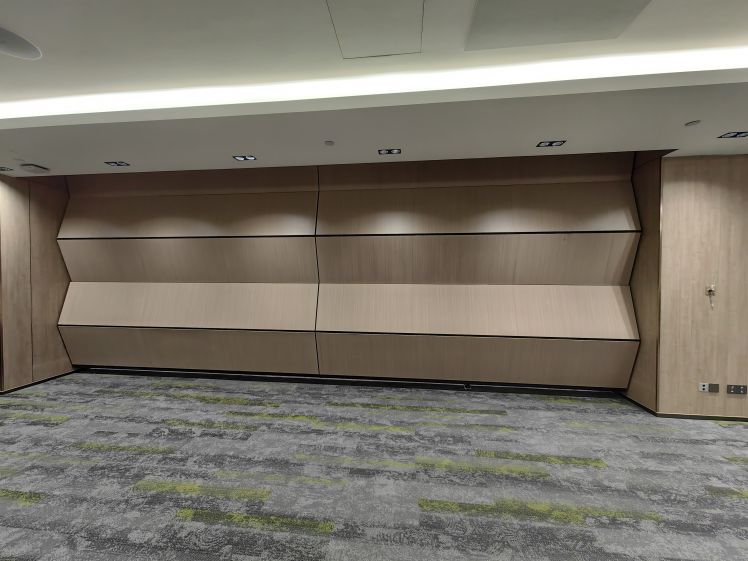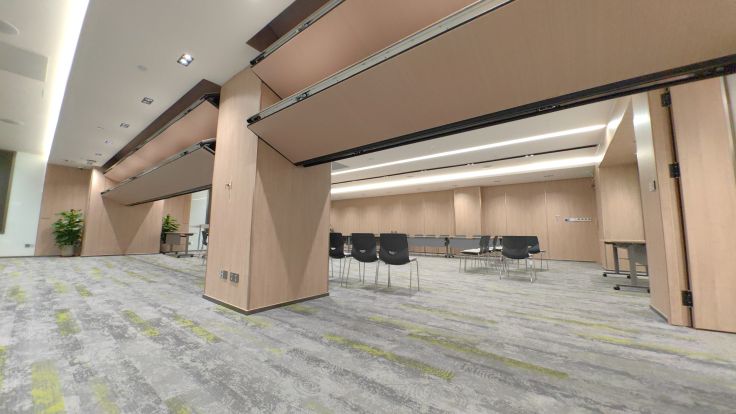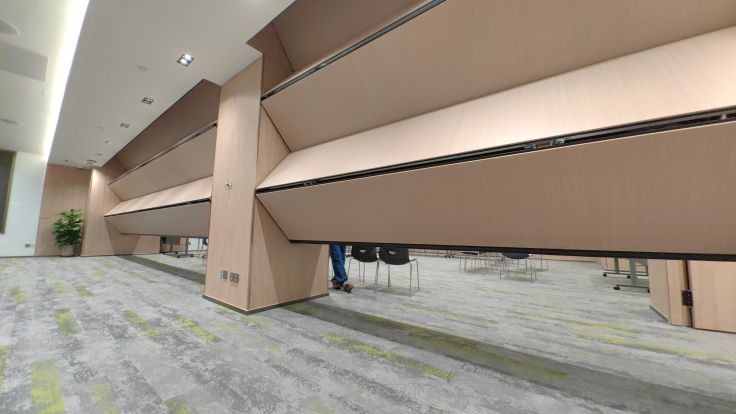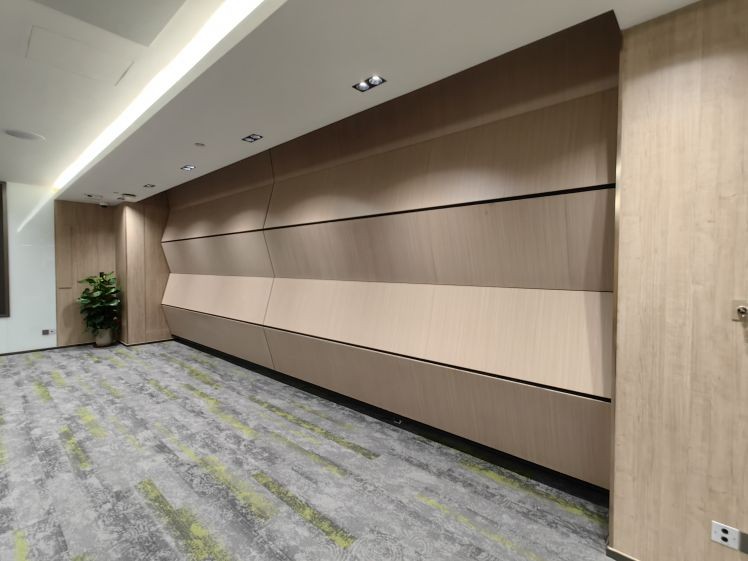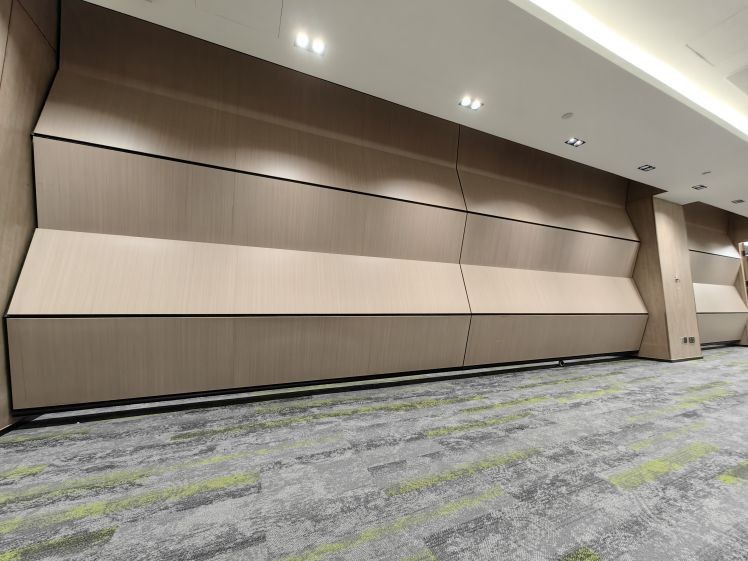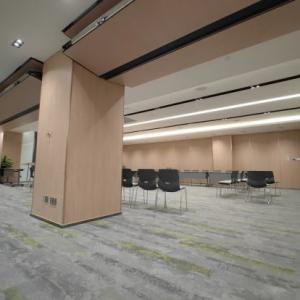Description
Folding acoustic wall partitions, also known as accordion partitions or Folding Walls, are specialized architectural elements designed primarily to divide large spaces while also providing acoustic insulation and flexibility. Here’s a detailed explanation of their features and applications:
Features of Folding Acoustic Wall Partitions:
-
Acoustic Properties:
- Sound Insulation: These partitions are constructed with materials that dampen sound, such as layers of acoustic fabric, foam, or composite materials. They help reduce noise transmission between divided spaces, making them ideal for environments where privacy and noise control are important.
- STC Rating: Acoustic partitions are often rated with a Sound Transmission Class (STC) rating, which indicates their effectiveness in reducing airborne sound transmission. Higher STC ratings indicate better sound insulation.
-
Design and Construction:
- Foldable Panels: The partitions consist of multiple interconnected panels that fold and unfold along a track system. This allows them to expand or contract to divide or open up spaces as needed.
- Materials: Panels can be made from various materials such as fabric-covered acoustic panels, laminates, glass, or even wood veneers, depending on aesthetic and functional requirements.
- Frame: Frames are typically made from lightweight yet durable materials such as aluminum, which provide structural support while allowing smooth operation.
-
Track System:
- Top Hung or Floor Supported: Depending on the design and installation preference, folding partitions can be either suspended from an overhead track system (top-hung) or supported by a floor-mounted track. Top-hung systems are more common for larger partitions, while floor-supported systems offer stability and easier installation in smaller spaces.
-
Operational Flexibility:
- Manual or Motorized: Folding partitions can be operated manually, where users push or pull the panels along the track to open or close the partition. Alternatively, motorized systems with remote control or push-button operation provide convenience, especially for larger or heavier partitions.
-
Applications:
- Commercial Spaces: Folding acoustic partitions are widely used in conference rooms, meeting spaces, banquet halls, and exhibition areas to create flexible configurations for varying group sizes and activities.
- Educational Institutions: They are used in schools and universities to divide classrooms, auditoriums, and multipurpose halls.
- Hotels and Event Centers: These partitions are also popular in hotels and event centers to create temporary rooms or separate event spaces without permanent walls.
Benefits:
- Flexibility: Allows spaces to be reconfigured quickly and easily according to changing needs.
- Acoustic Control: Provides effective sound insulation, maintaining privacy and reducing distractions between divided spaces.
- Aesthetic Options: Available in a variety of finishes and materials to complement different interior designs.
- Space Efficiency: Maximizes the use of available space by creating multiple functional areas within a single room.
In summary, folding acoustic wall partitions are versatile architectural solutions that combine functionality with acoustic performance, making them essential in modern building designs that prioritize flexible space utilization and acoustic comfort
